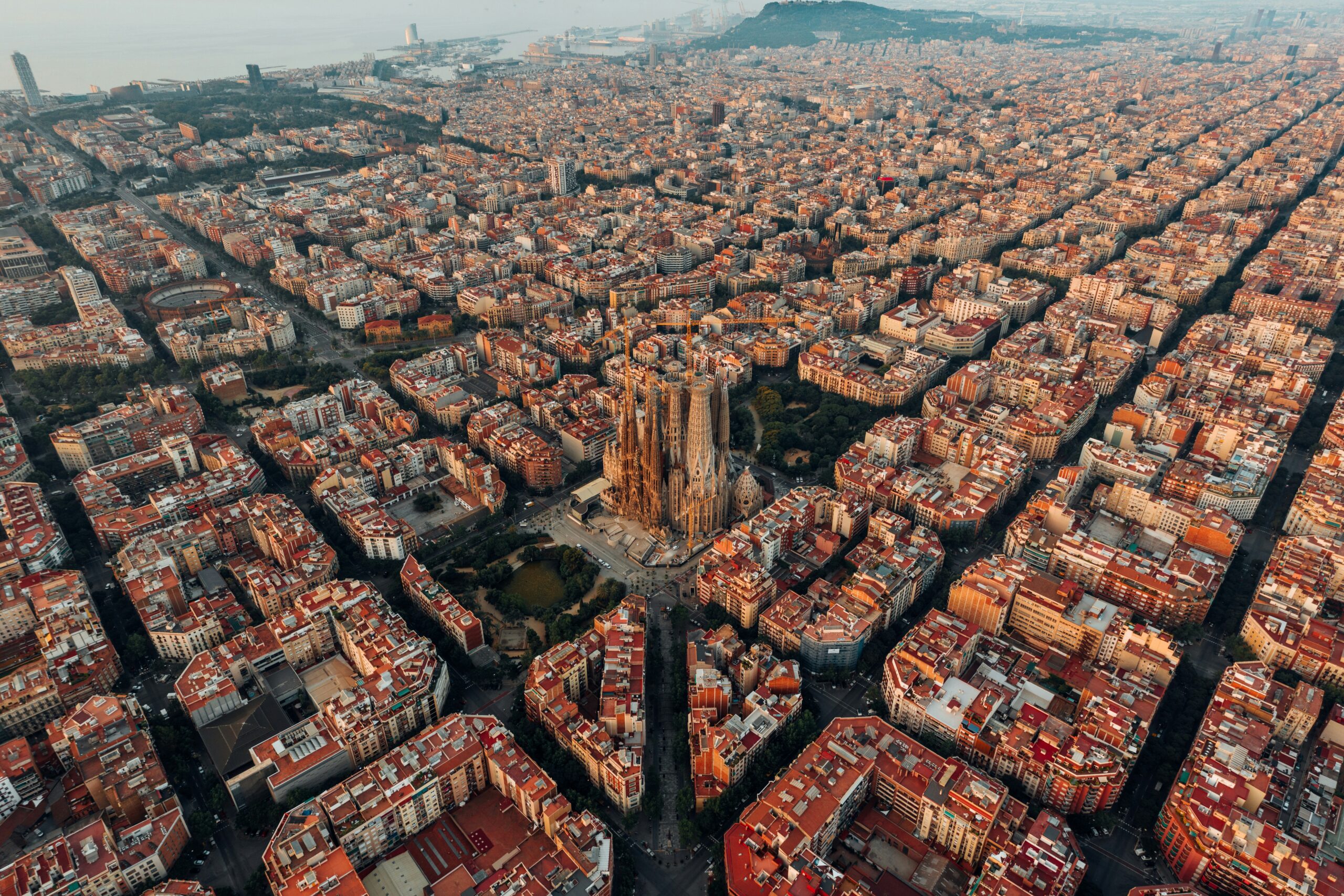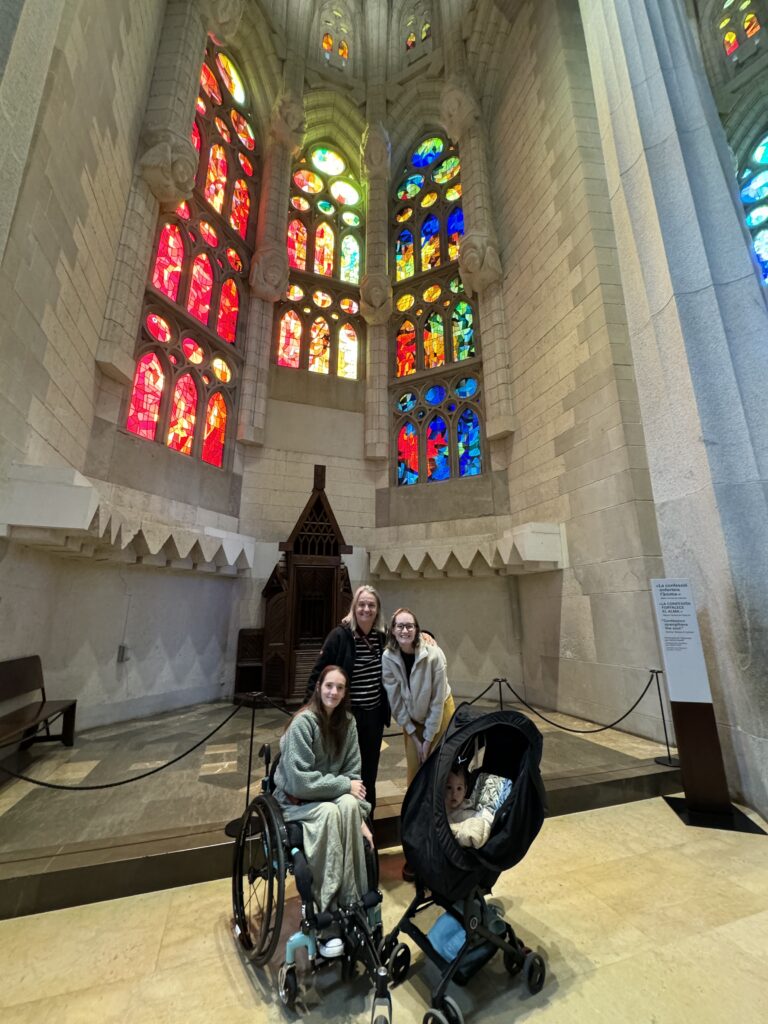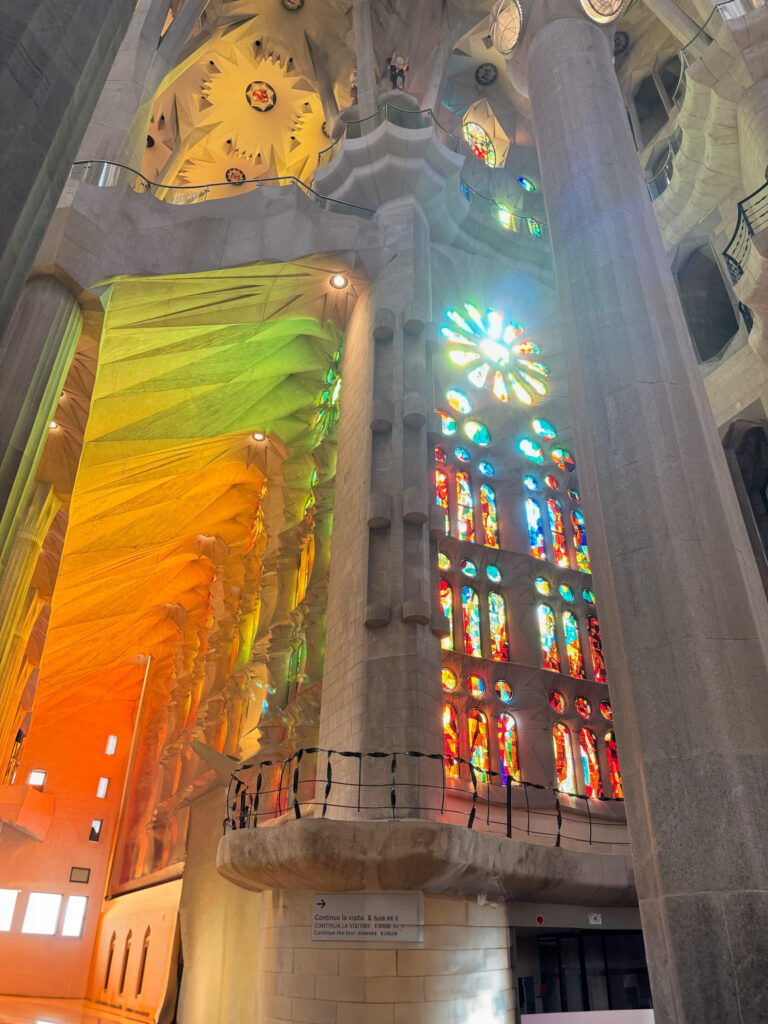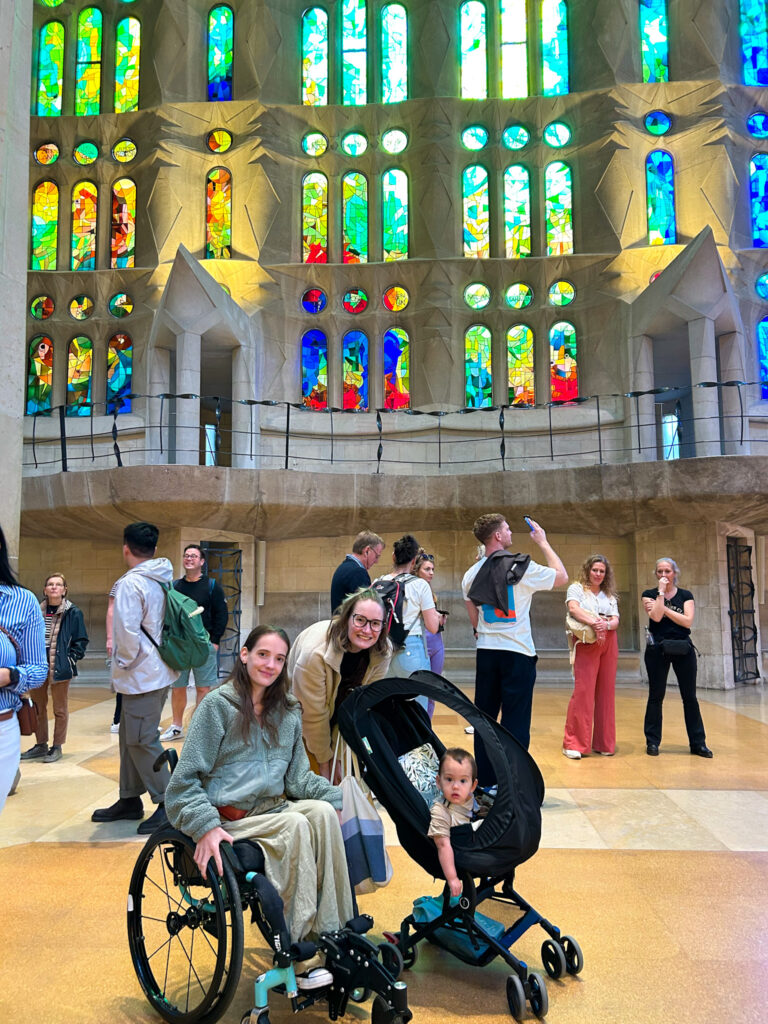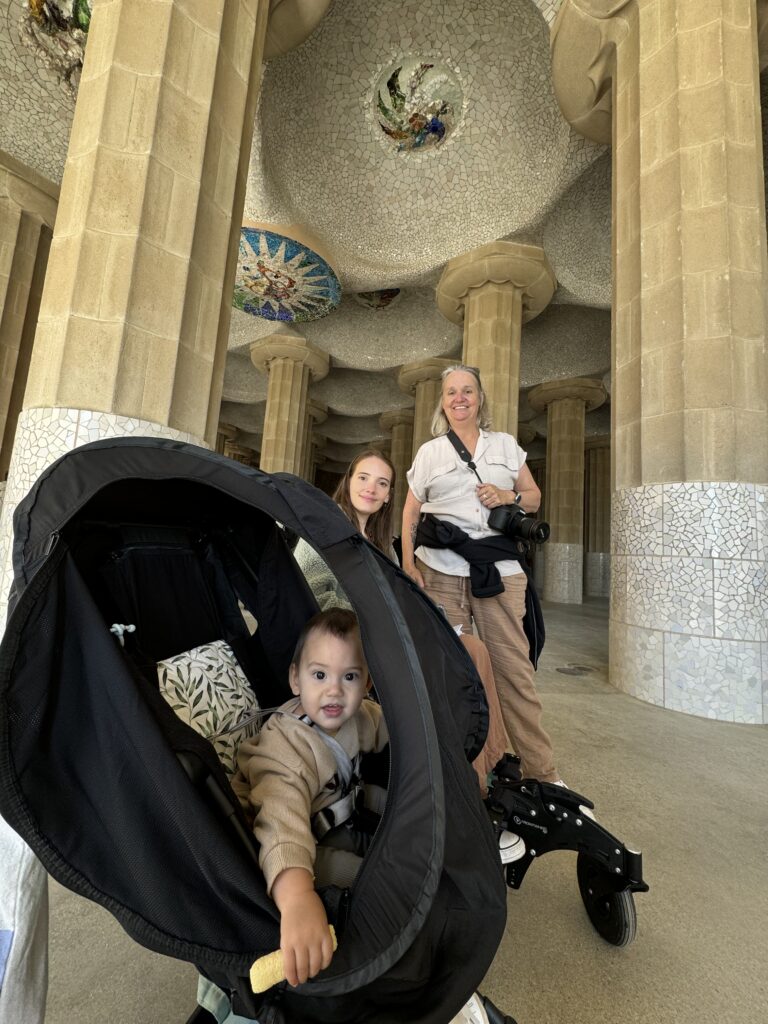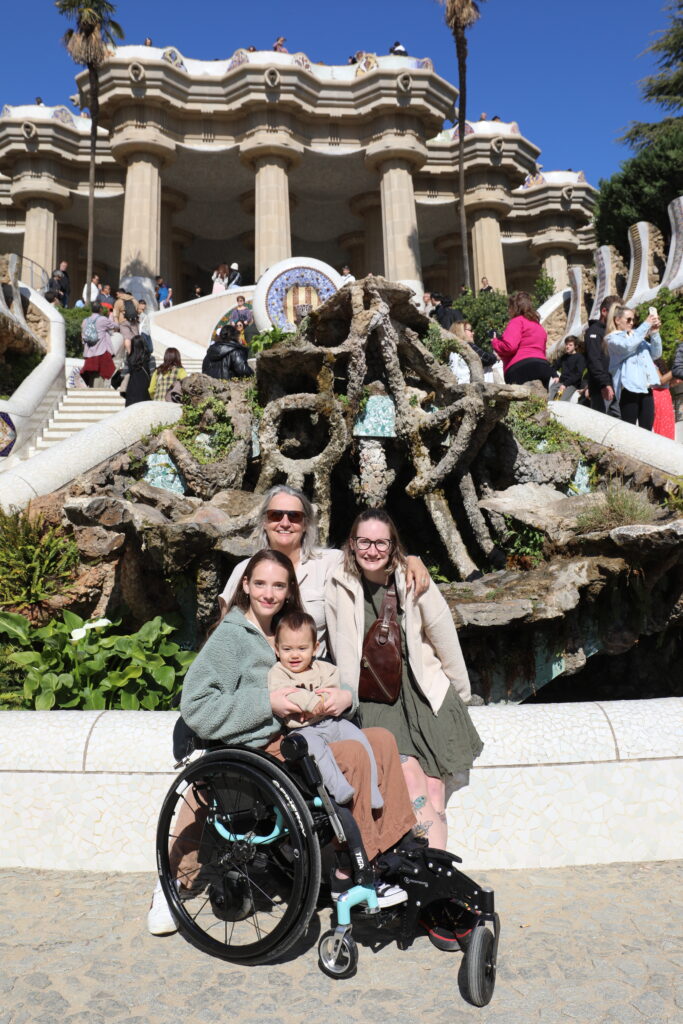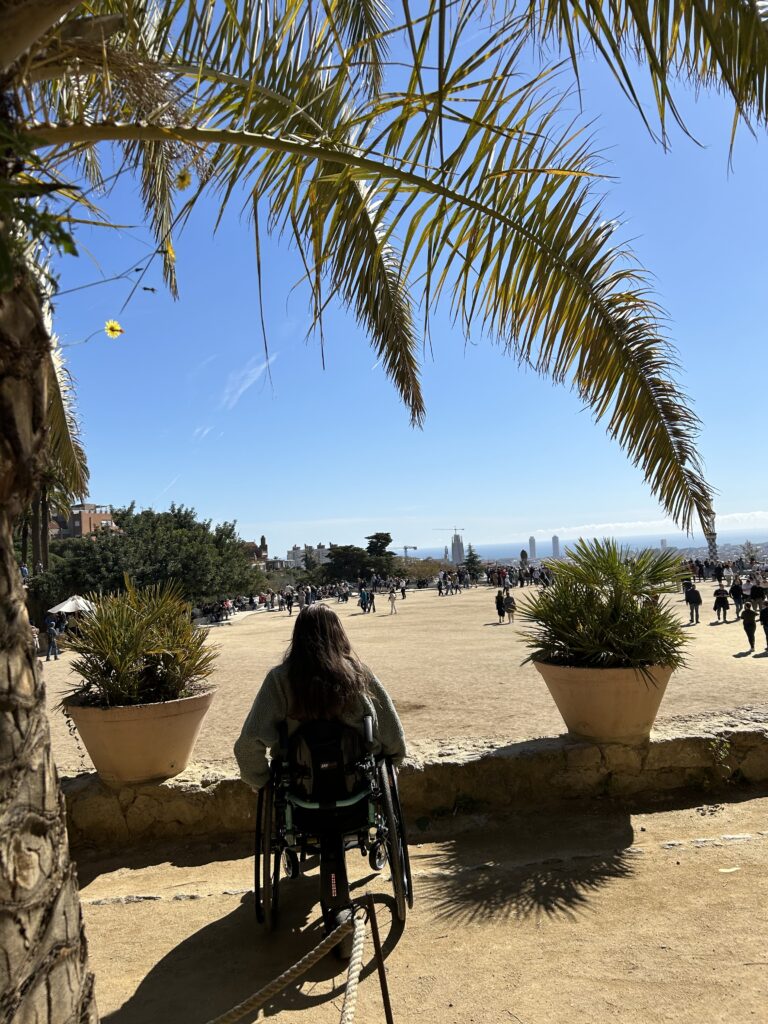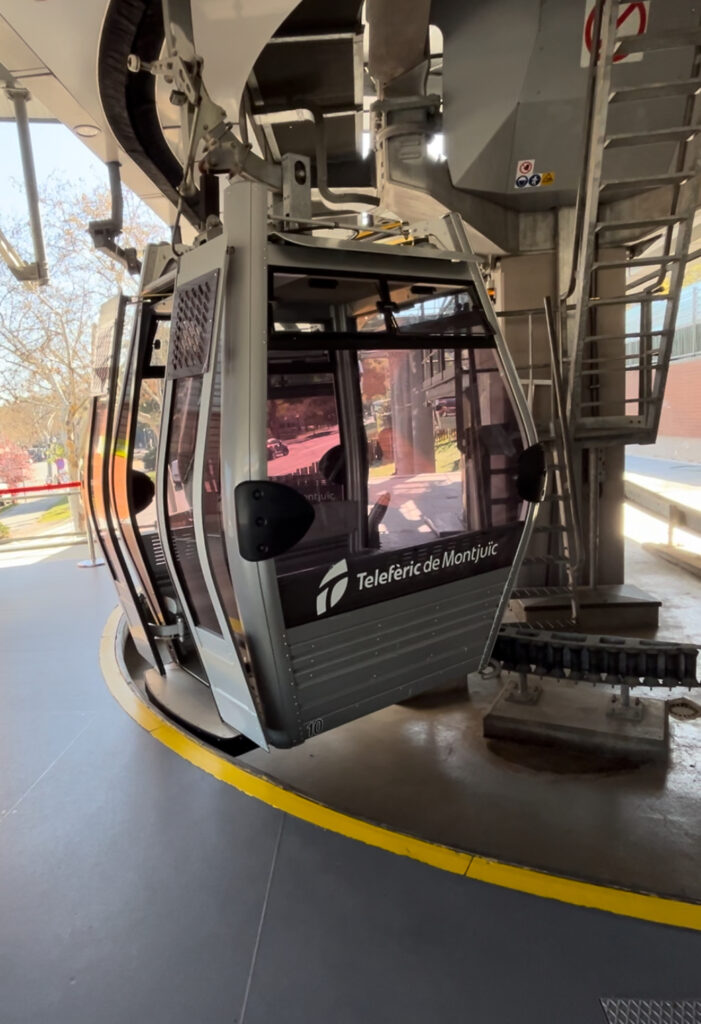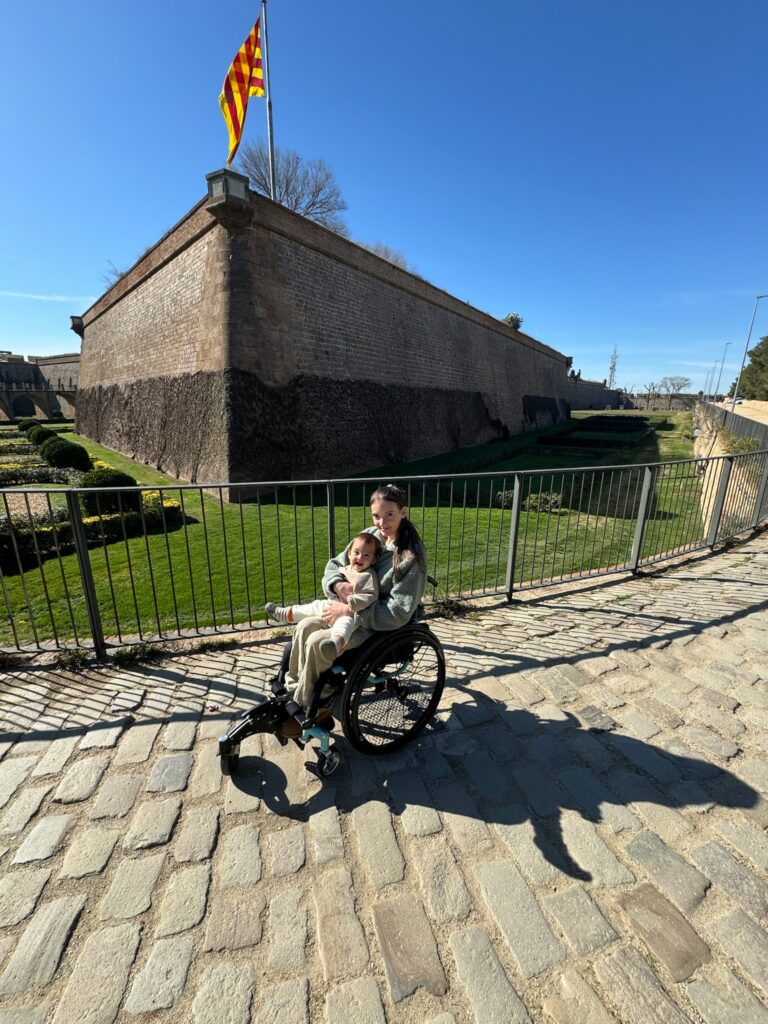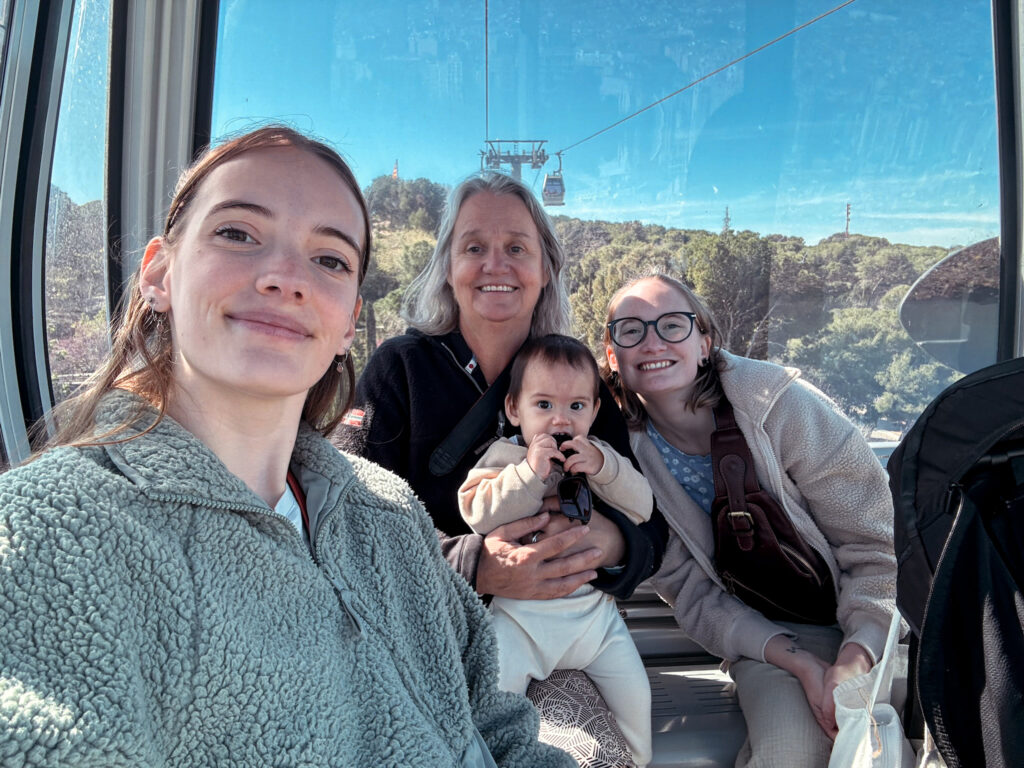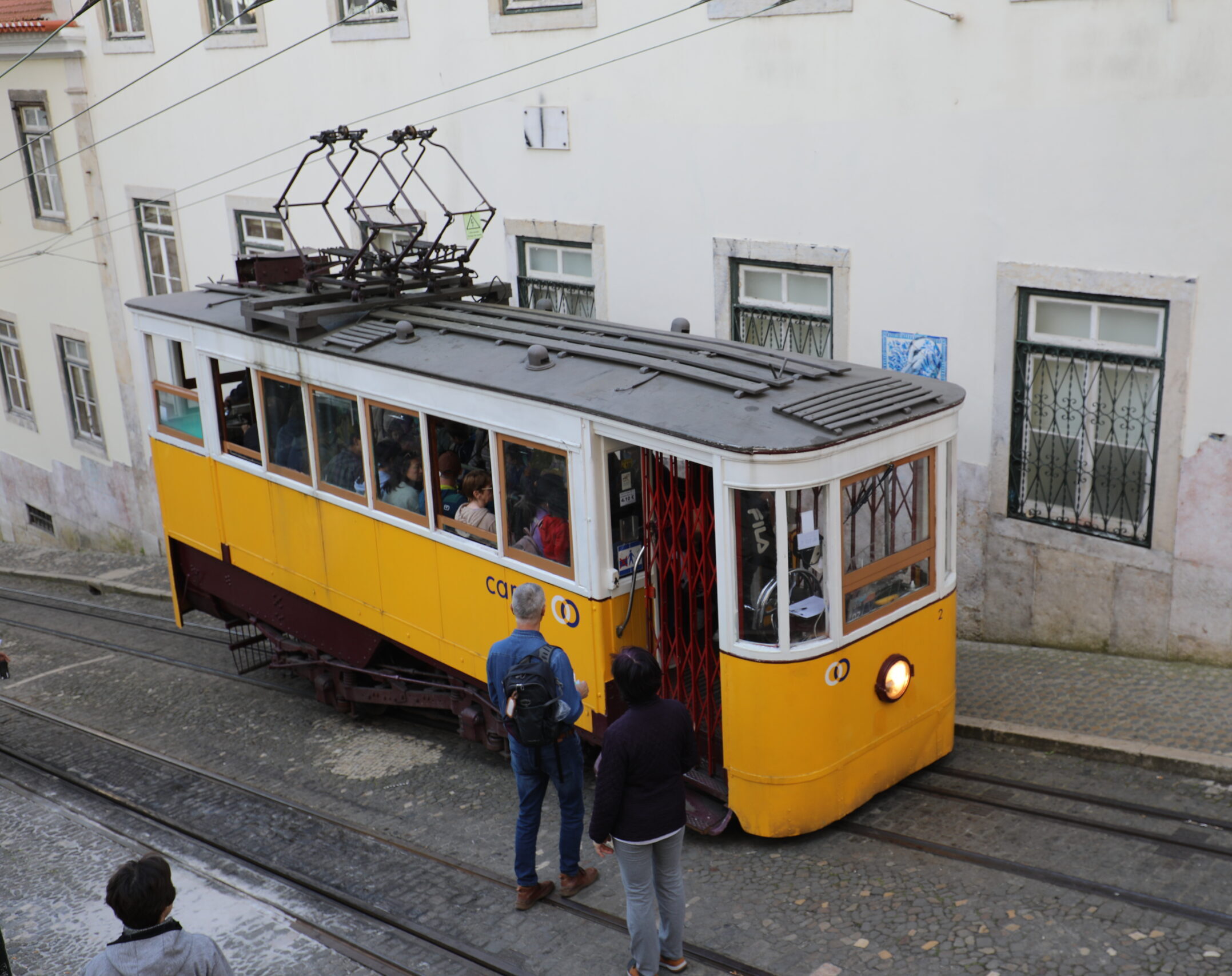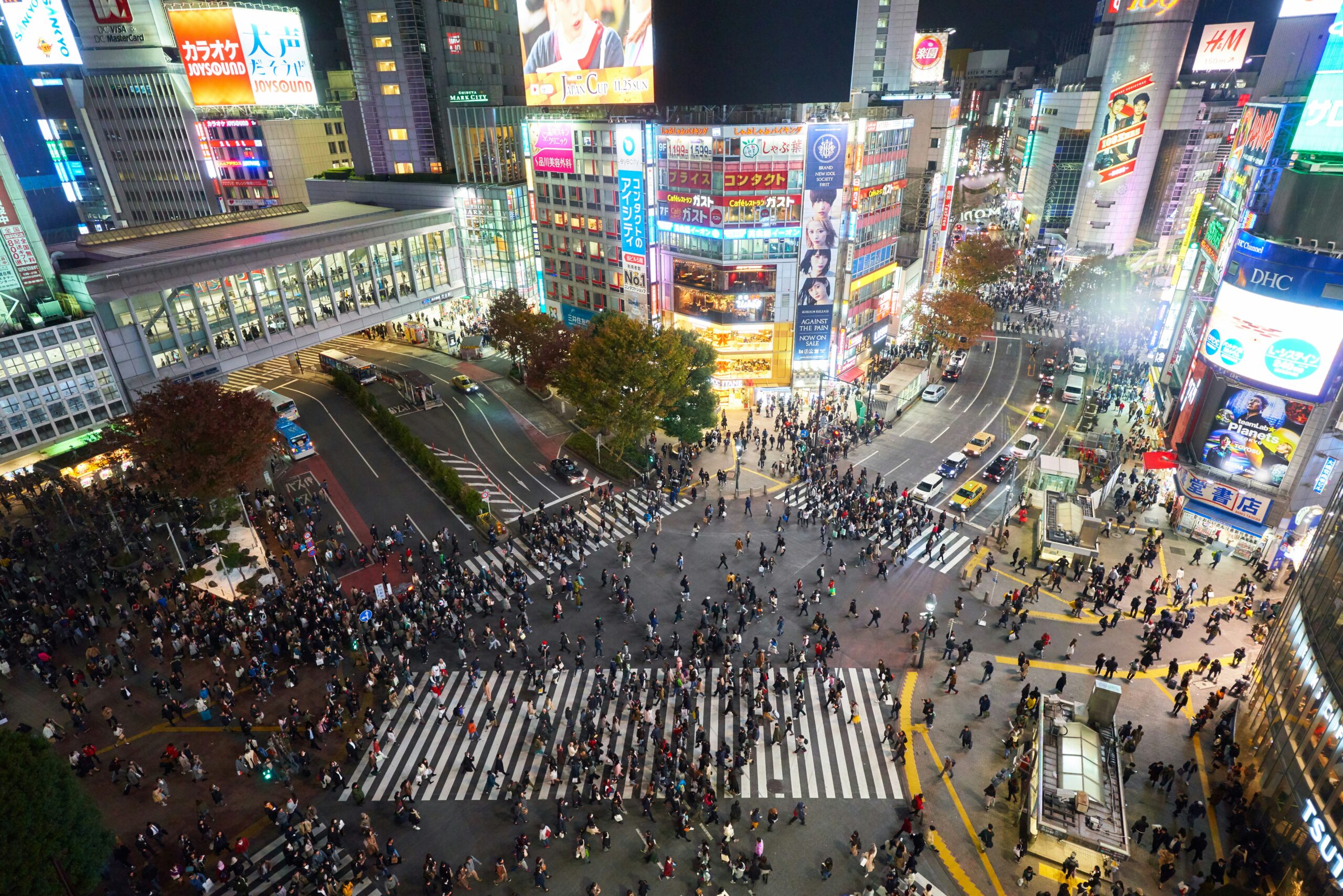Barcelona is a feast for the senses, offering world-class architecture, tantalizing tapas, and Mediterranean breezes. But how accessible is this vibrant city for wheelchair users? The answer is—surprisingly accessible! Barcelona has made tremendous efforts to ensure that its historic streets and iconic landmarks are open to all travellers, including those with mobility challenges.
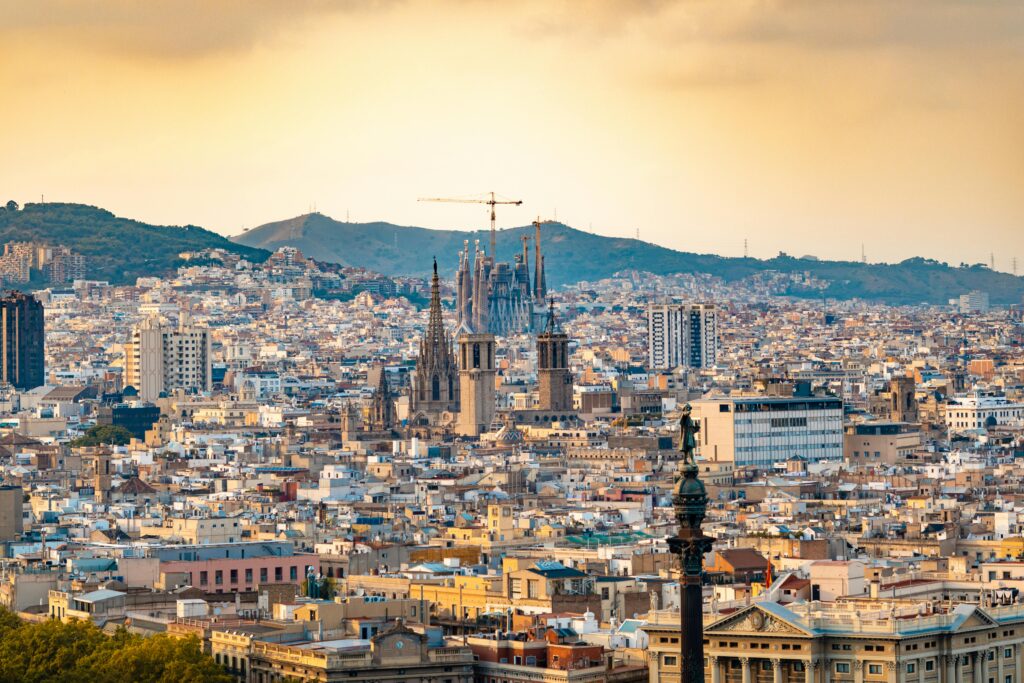
Whether you’re a seasoned traveler or planning your first wheelchair-accessible trip, this guide will walk you through everything you need to know to explore Barcelona with ease. From accessible attractions to practical tips, we’ve got you covered.
Accessible Attractions in Barcelona
Barcelona has achieved remarkable progress in making its attractions wheelchair-friendly. Here are some must-see highlights, along with their accessibility features.
1. Basilica de la Sagrada Família
This incredible church is one of Barcelona’s most famous landmarks, drawing millions of visitors from all over the world. Antoni Gaudí’s masterpiece, the Sagrada Família, is a stunning example of modernist architecture, with its intricate details and towering spires that stand out in the city’s skyline. It’s not just beautiful—it’s also designed to be wheelchair accessible, so everyone can enjoy its charm and spiritual significance.
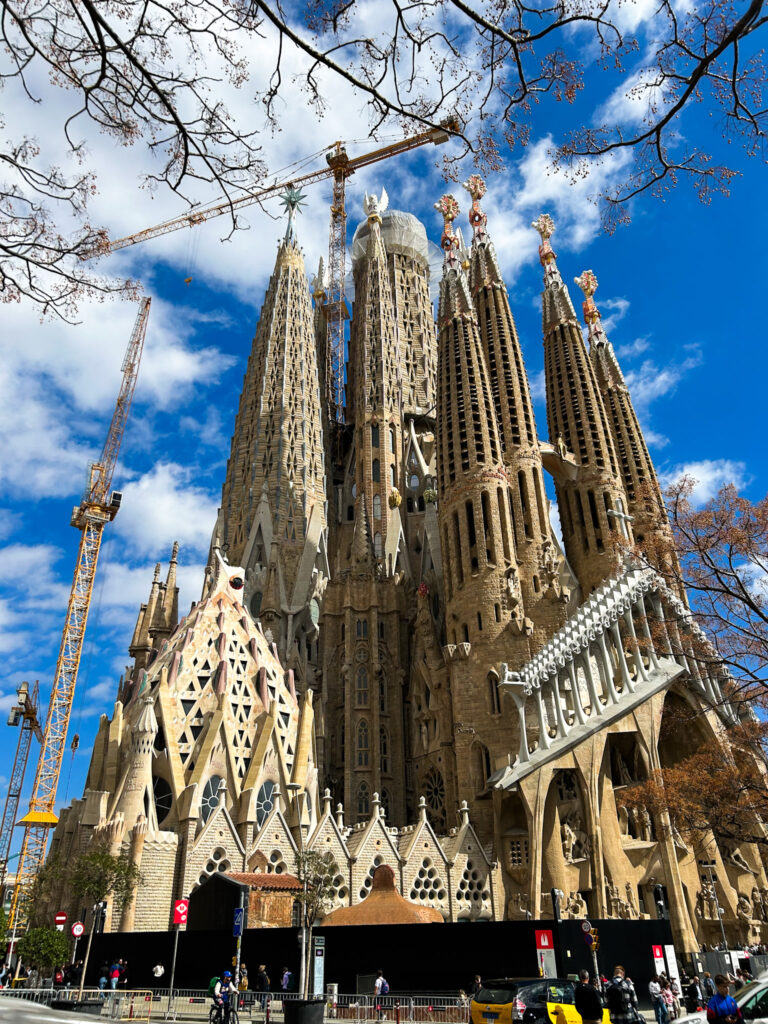
tickets
Priority entry is free for visitors with mobility issues and one companion. To access this, you must book an entry pass specifying your desired date and time to visit the church. Additionally, you can arrange a free guided tour (currently €4 for your companion).
Both the entry pass and guided tour can be booked online through the official Sagrada Familia website or app. While the website mentions that “People with disabilities must show official proof of the disability,” we were not asked to provide any documentation during our visit. Simply presenting our entry passes on the app was sufficient to gain entry.
We highly recommend downloading the official Sagrada Familia app from the App Store or Google Play. The app gives you convenient access to the free audio guide and a detailed mobility map, ensuring a more enjoyable visit. It also features the exclusive “What You Don’t See” augmented reality project, which reveals hidden areas of the Basilica for a truly unique experience.
Accessibility features
The streets around the church are smooth and equipped with excellent curb cuts, but they remain consistently crowded throughout the day. Navigating the area in a wheelchair can be a bit challenging, though a little patience goes a long way.
Wheelchair users and visitors with limited mobility can access the church via an elevator located at Entrance B on Carrer de la Marina. The interior of the church offers a seamless and smooth surface, making it a pleasure to navigate. Both the museum and gift shop are accessible via a gently sloping ramp, ensuring ease of entry for all visitors.
accessible bathrooms
The complex features two accessible restrooms, each thoughtfully equipped to meet diverse needs. One is located near the Passion facade, offering a sliding door but with limited space, while the other is near the Nativity facade, featuring a narrow inward-opening door. Both restrooms include essential accessibility features such as grab rails, parallel bars, wash basins, and changing facilities, ensuring convenience and comfort for all visitors.
how to get here
There are several convenient ways to reach the Basilica:
Accommodation – We opted to stay in a hotel just one block away, knowing we’d spend plenty of time exploring the area. This gave us easy access to the church and nearby parks, making our visit even more enjoyable.
Metro – The Sagrada Familia station, serviced by Metro lines 2 and 5, is a great option. For added convenience, there’s an elevator at the station exit that takes you directly to the main entrance on Carrer de la Marina.
Buses – Barcelona’s public buses are fully wheelchair accessible, and several lines—19, 33, 34, D50, H10, and B24—stop on the streets surrounding the Basilica.
Hop-On Hop-Off Tourist Buses – These buses conveniently stop right outside the church, making them an easy and popular option for tourists.
No matter your choice, each option ensures a smooth journey to one of Barcelona’s most iconic landmarks.
additional tips
It is recommended to arrive at least 15 minutes before your scheduled entry time to allow for any delays or issues with accessing the elevator. The staff at Sagrada Familia are very helpful and accommodating towards visitors with disabilities, so don’t hesitate to ask for assistance if needed.
Also, be sure to bring a valid form of identification that shows proof of disability in case it is required upon entry.
2. Park Güell
Park Güell is a sprawling garden filled with breathtaking and uniquely designed architectural features, the masterpiece of famed Catalan architect Antoni Gaudí. While the park’s vibrant paths can be steep in places, it remains accessible to wheelchair users and individuals with limited mobility. Our visit to Park Güell was truly unforgettable and one of the most memorable highlights of our time in Barcelona.
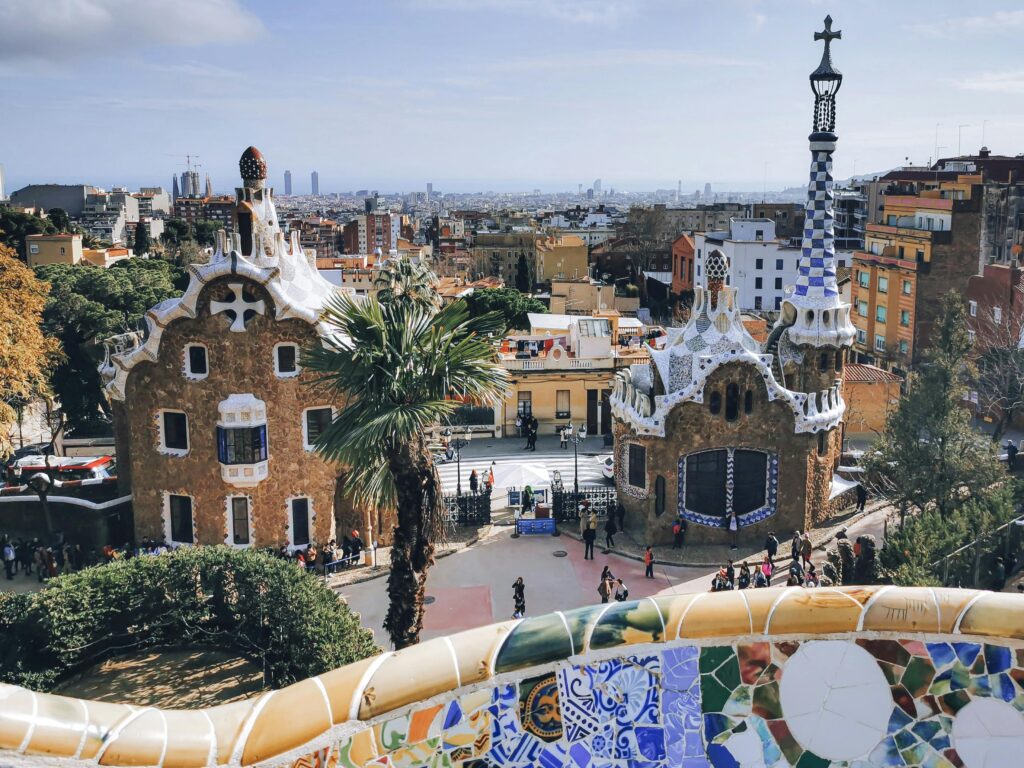
Tickets
Tickets with a scheduled date and time must be purchased in advance of your visit. To ensure entry, it is highly recommended to book online well ahead of time, as access to the park is regulated to support sustainability efforts.
Visitors with disabilities are granted free admission, while one accompanying person is eligible for a 75% discounted ticket. Tickets can be conveniently purchased through the official Park Güell website or via trusted platforms like Viator and Get Your Guide.
ACcessibility
For visitors with limited mobility, the recommended entry point to the park is via the gates on Carretera del Carmel. This entrance is conveniently located near bus stops, restrooms, and the main pathway that winds through the park.
An accessible route is available, featuring compacted dirt pathways that are generally easy to navigate. However, please be aware that some sections include steep inclines, which may pose challenges for wheelchair users. While a few areas are completely inaccessible, the majority of the park remains reachable and enjoyable for most visitors.
accessible bathrooms
Park Guell offers two accessible restrooms for visitors. The first is conveniently located at the entrance on Carrer del Carmel, while the second can be found inside the park near the restaurant. Both facilities are well-maintained and thoughtfully designed, featuring a side bar, parallel grab bar, and wash basin. The doors open inward, and there is ample space to comfortably maneuver a wheelchair.
how to get here
Visitors with limited mobility and accredited vehicles can find three free parking spaces conveniently located at the Carretera del Carmel entrance. Please be aware that these spaces are available on a first-come, first-served basis and cannot be reserved in advance.
For those traveling by bus, line 19 stops just 200 meters from the Carretera del Carmel entrance. Disembark at the stop immediately after the entrance and enjoy an easy downhill roll to the gates. When leaving, simply head down the hill about 150 meters to reach the bus stop for your return trip to the city.
If you prefer to travel by taxi, a ride from central Barcelona typically costs around €14. For your convenience, there is also a taxi rank located on Carretera del Carmel for your return journey.
3. La Rambla
La Rambla is undoubtedly Barcelona’s most iconic street. This vibrant pedestrian boulevard stretches 1.2 kilometers, connecting the Christopher Columbus monument near Port Vell in the south to Plaça de Catalunya in the north.
Renowned for its accessibility, the wide and flat walkway is exceptionally wheelchair-friendly, offering smooth and effortless navigation. Among Europe’s top tourist destinations, La Rambla stands out as one of the most accommodating for individuals with mobility needs. Visitors can explore a diverse selection of accessible restaurants and souvenir shops, ensuring a memorable and inclusive experience for all.
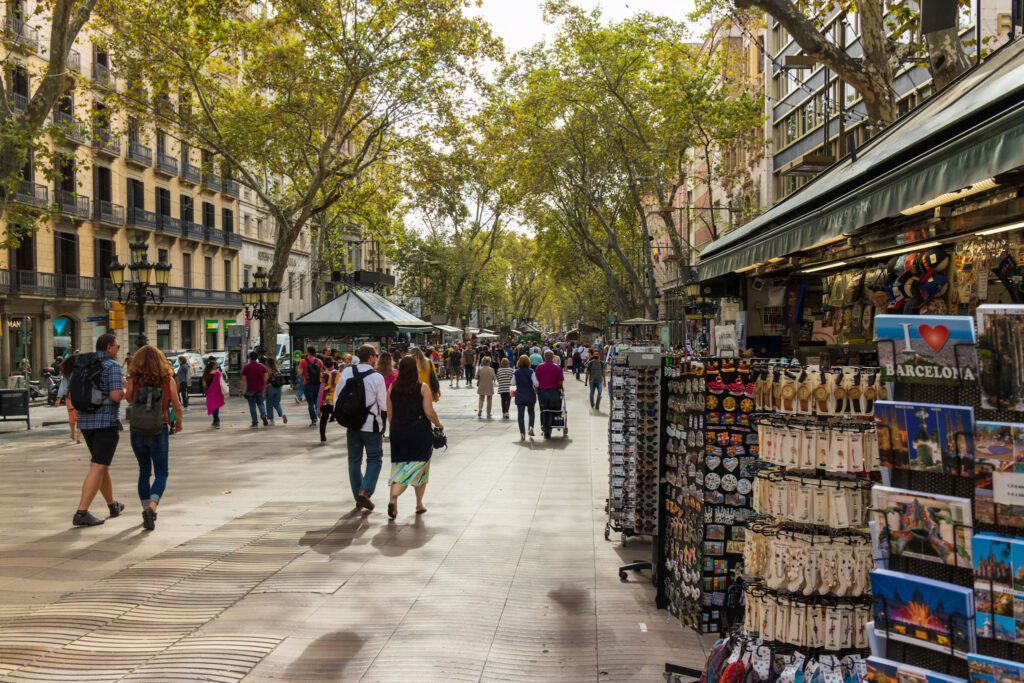
points of interest
Gothic Quarter – Wander through the charming, narrow streets of Barcelona’s historic Gothic Quarter, filled with medieval architecture and hidden gems at every turn.
El Mercat de la Boqueria – Explore this vibrant and bustling market, famous for its fresh produce, local delicacies, and colorful food displays that are a feast for the senses.
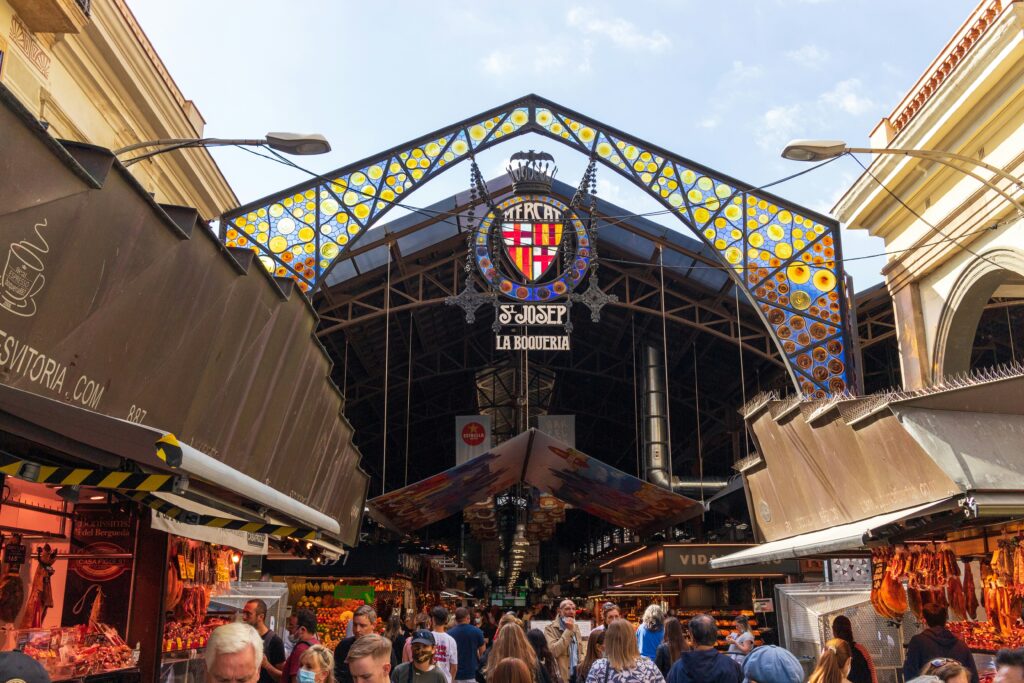
Font de Canaletes – Visit this iconic fountain on La Rambla, where legend has it that drinking from its waters ensures a return to Barcelona.
Exquisite floor mosaics – Admire the intricate and artistic floor mosaics scattered throughout the city, showcasing Barcelona’s rich cultural and artistic heritage.
ACcessible bathrooms
Accessible bathrooms near La Rambla are primarily found within restaurants and shops. Among them, the most convenient and well-maintained option we discovered was at Forn del Pi, a charming bakery nestled just behind the Boqueria Market.
4. Teleferic de Montjuic
The Teleferic de Montjuïc, also known as Barcelona’s Cable Car, is a fully accessible gondola ride that offers breathtaking views of the city. Starting at the base station, the round-trip journey takes you to the summit of Montjuïc, home to the historic 17th-century castle, with a stop at the scenic Mirador station along the way.
Tickets
Tickets are available for purchase either online or at the ticket office. Please note that no discounts are offered for individuals with disabilities or their companions. We purchased our tickets directly through the official website here.
You can also purchase tickets from companies such as Viator and Get Your Guide.
accessibility features
The cable car pods are fully enclosed and designed to be completely accessible for individuals with limited mobility or those using wheelchairs. Attendants will pause the cable car to ensure safe and easy boarding, as well as when you disembark at the summit. The pods feature foldable bench seats, creating ample space to accommodate wheelchairs comfortably.
However, please note that the paths at the summit and within Castle Montjuïc are uneven and made of large cobblestones. While it is possible to navigate the area, we recommend taking your time and exercising caution.
accessible bathrooms
Within the Castle Montjuic grounds, you’ll find a clean, modern, and fully accessible bathroom. The facility features an outward-opening door, ample space for easy maneuverability, and parallel grab rails on both sides, ensuring convenience and comfort for all visitors.
how to get here
The easiest way to reach the main entrance on Avinguda de Miramar is by hopping on public bus Routes 55 or 150. Both buses conveniently stop at Estació del Funicular, just a short stroll away from the cable car entrance.
Pro tip: On your way up the hill, the buses pass two iconic landmarks—the National Art Museum of Catalonia and the Mirador Barcelona. The Mirador’s expansive terrace offers breathtaking panoramic views of the city, making it an ideal spot to pause, relax, and take in the stunning beauty of Barcelona.
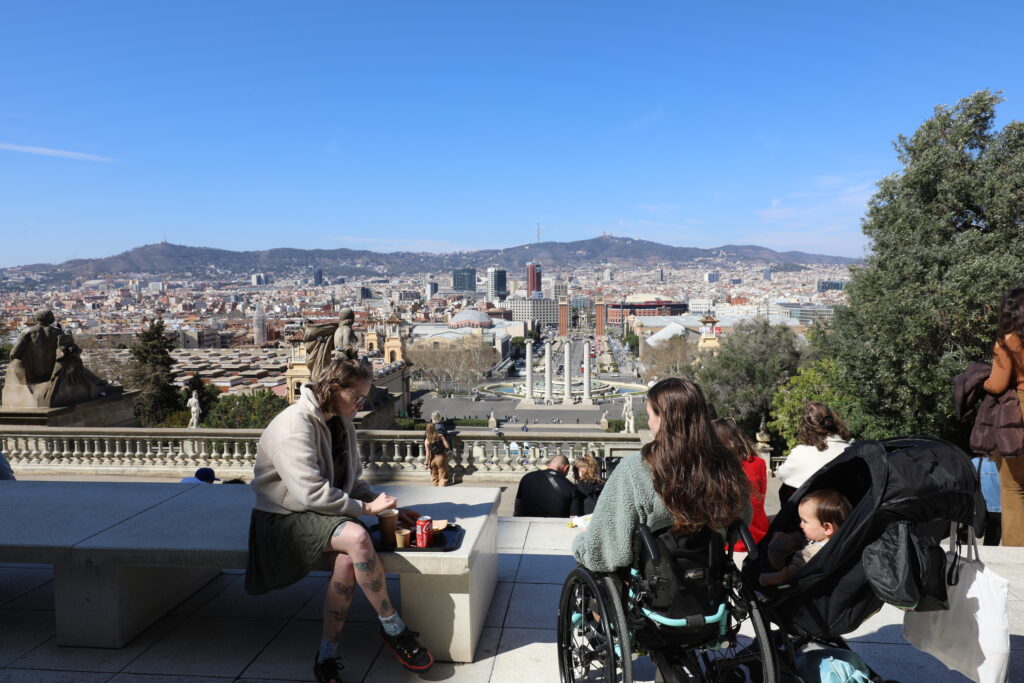
Getting Around Barcelona
Navigating Barcelona is a breeze, thanks to its modern infrastructure and thoughtful design. Here’s how to make the most of your visit.
public transportation
Barcelona’s public transport system is notably wheelchair-friendly.
- Metro: The majority of Barcelona’s Metro stations are wheelchair accessible with elevators installed. Only 12 of the 165 metro stations are currently non-accessible for wheelchair users but the city has made a commitment to be 100% fully accessible.
- Buses: All buses are equipped with ramps and priority spaces for wheelchair users, offering a seamless way to get around.
- Pro tip: Download apps like Google Maps or TMB App (Barcelona Metro/Bus app) to plan accessible routes efficiently.
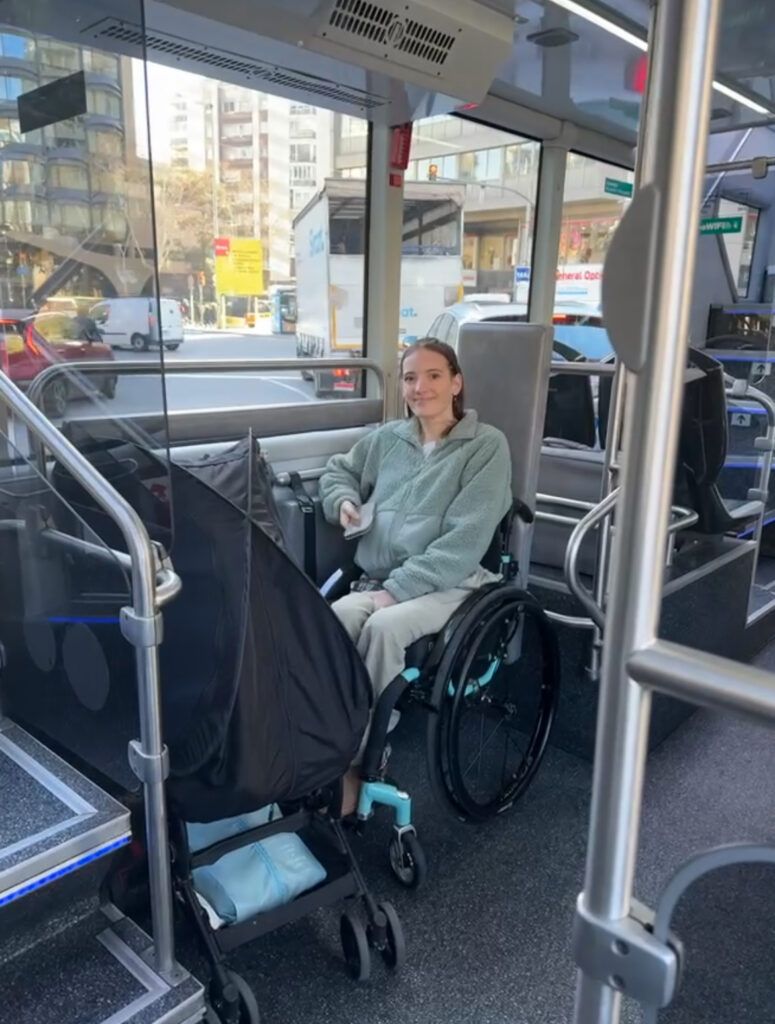
wheelchair-accessible taxis
We found Barcelona to be the easiest city in Europe to get an accessible taxi, and at reasonable prices. You can try hailing a taxi on the street (accessible vans are very common) or pre-book a taxi online via websites such as Taxiamic or Booktaxibcn.
Exploring on Foot (or Wheels!)
Barcelona’s sidewalks are impressively wide, flat, and equipped with curb cuts.
- Pro tip: Look out for pedestrianized areas like the Gothic Quarter, which make exploration even easier.
Staying Comfortable in Accessible Accommodation
Barcelona offers a wide range of accommodations with accessibility features tailored to wheelchair users.
- Features to look for: Elevators, roll-in showers, grab bars/rails, wide doorways, and adjustable beds.
- Best neighborhoods: Eixample, the Gothic Quarter, and El Raval—all close to major attractions and transportation hubs.
- Pro tip: Use booking platforms like Expedia, Booking.com or Airbnb to filter properties with wheelchair-accessible amenities.
We had the pleasure of staying in two amazing properties:
- Catalonia Avinyo – a fully accessible hotel in the Gothic Quarter
- Radison Blu 1882 – a fully accessible hotel close to the Basilica de la Sagrada Familia
Dining and Nightlife
Barcelona’s culinary and nightlife scenes are second to none, and many establishments are wheelchair-friendly.
Dining Options
- While some smaller tapas bars may have limited accessibility, most popular restaurants have step-free access and accessible restrooms.
- Pro tip: Don’t miss the chance to try fresh seafood and patatas bravas at wheelchair-friendly spots along the coastline.
nightlife
- Areas like El Raval and the Gothic Quarter have wheelchair-accessible bars and clubs to experience Barcelona’s legendary nightlife.
- Pro tip: Contact venues in advance to confirm accessibility features, especially for clubs.
Top Tips for a Smooth Visit
Here are some extra tips to ensure your trip to Barcelona goes off without a hitch.
- Plan Your Routes: Use apps like Moovit or Google Maps to identify metro stations and bus routes with wheelchair access.
- Book Accessible Tours: Consider wheelchair-friendly guided tours to cover more ground without stress.
- Stay Central: Base yourself in neighborhoods like Eixample to minimize the need for long commutes.
- Beach Services: If you’re visiting in summer, take advantage of Barcelona’s adaptive beach programs for a fun and inclusive seaside experience.
- Travel Light: Narrow streets in the Gothic Quarter mean traveling with minimal luggage will make navigation easier.
Barcelona Is Waiting for You
Barcelona sets the gold standard for accessibility in historic cities, blending modern infrastructure with a genuine commitment to inclusivity. From rolling through iconic landmarks like the Sagrada Família to relaxing on some of the most accessible beaches in the world, every aspect of Barcelona is designed to welcome wheelchair users with open arms.
Don’t just visit Barcelona—experience it. With its wheelchair-friendly streets, world-class attractions, and warm hospitality, this city promises an unforgettable adventure. Pack your bags, charge your wheels, and get ready to explore the magic of Barcelona!
Happy Travels, Always

